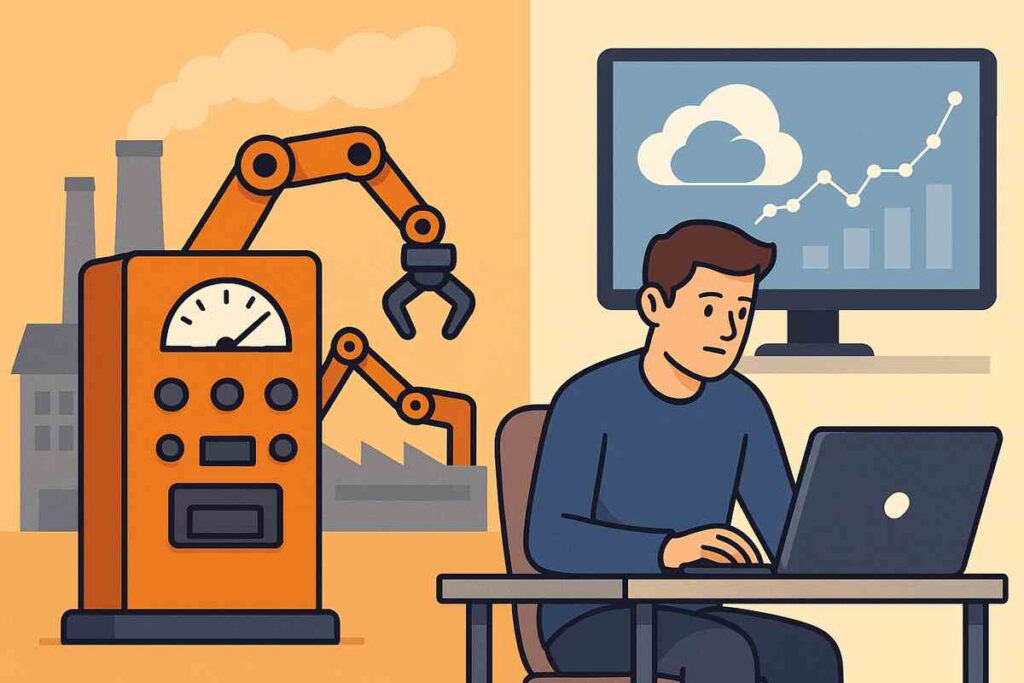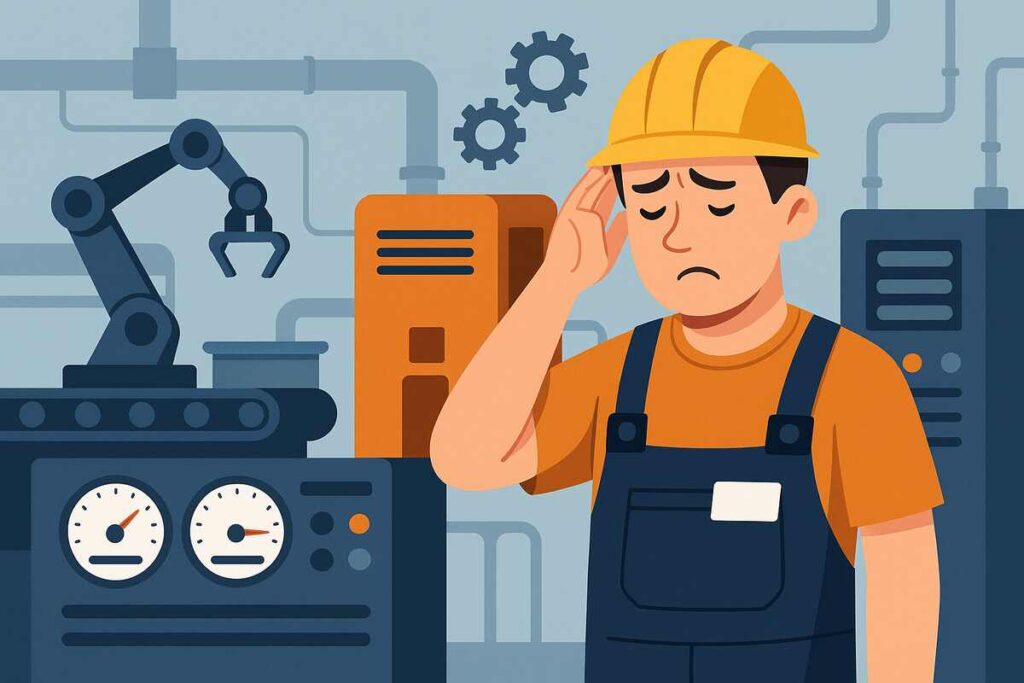Physical Address
304 North Cardinal St.
Dorchester Center, MA 02124
Physical Address
304 North Cardinal St.
Dorchester Center, MA 02124

The rise of Industrial IoT adoption marks a turning point in modern manufacturing and infrastructure management. Though this shift presents significant integration and security challenges, it’s an evolution that industries cannot afford to ignore. From predictive analytics to smart energy usage and real-time monitoring, Industrial IoT (IIoT) is transforming operations, driving efficiency, and future-proofing enterprises worldwide.
In this guide, we’ll explore why Industrial IoT adoption is complex, yet unavoidable—and how organizations can navigate the road ahead using best practices and proven strategies.
Industrial IoT (IIoT) connects machines, systems, and sensors in industrial settings to collect and analyze data in real time. It’s a cornerstone of Industry 4.0 and a key enabler of digital transformation across sectors.
IIoT is being used for:
According to McKinsey & Company, IIoT technologies could generate $1.2–$3.7 trillion in value annually by 2025 through increased asset utilization, productivity, and supply chain efficiency.
Adopting IIoT gives companies a competitive advantage by enabling faster decision-making and improved operational visibility.
Siemens and GE Digital are two prime examples of industrial giants leveraging IIoT platforms to optimize manufacturing and supply chain efficiency on a global scale.
Despite the value IIoT offers, many organizations face considerable hurdles during implementation.

Most industrial equipment was never designed for connectivity. Integrating IoT sensors into decades-old machinery often requires costly and complex retrofitting.
Workaround: Focus on hybrid models that bridge legacy systems with edge devices capable of basic data collection and cloud communication.

A connected environment expands the attack surface. The Cybersecurity & Infrastructure Security Agency (CISA) warns that IoT devices are frequent entry points for cyberattacks due to weak authentication and firmware flaws.
Solution: Employ device-level encryption, multi-factor authentication, secure protocols (like TLS), and network segmentation between OT and IT environments.

Industrial teams often lack experience with IoT systems, cloud infrastructure, and cybersecurity.
As noted by the World Economic Forum, digital literacy and upskilling are critical to unlocking IIoT’s potential and must be embedded in long-term talent strategies.
Between hardware, networking, cloud storage, and integration, early-stage costs can be significant. However, the International Data Corporation (IDC) estimates that companies recover investments within 24 to 36 months via cost reductions and operational improvements.
The fragmented nature of IIoT technology often leads to compatibility issues. Many devices use proprietary protocols that don’t play well with others.
Best Practice: Choose vendors that support open standards such as OPC UA, MQTT, or RESTful APIs to avoid lock-in and improve system flexibility.
Bosch rolled out IIoT platforms in more than 250 manufacturing plants via its Industry 4.0 software suite, achieving a 25% boost in OEE (Overall Equipment Effectiveness) and a 30% drop in downtime.
Honeywell’s Forge Platform connects machines, systems, and people across factories for real-time performance monitoring—helping companies reduce unplanned downtime by up to 20%.
ABB uses smart sensors to monitor industrial motors and drives, enabling condition-based maintenance and remote diagnostics that cut field service costs substantially.
| Sector | IIoT Use Case | Primary Benefit |
|---|---|---|
| Automotive | Predictive diagnostics in assembly lines | Reduced maintenance costs |
| Energy & Utilities | Grid edge monitoring with smart meters | Real-time load balancing |
| Pharmaceuticals | Cold chain temperature tracking | Regulatory compliance |
| Agriculture | Soil and climate sensors | Optimized irrigation and crop yields |
| Oil & Gas | Remote monitoring of offshore facilities | Enhanced worker safety |
Security is a major concern, but manageable with best practices—encryption, secure APIs, regular updates, and network segmentation.
While IoT includes consumer devices (like smart thermostats), IIoT focuses on mission-critical industrial applications requiring greater precision, safety, and uptime.
Yes. Entry-level IIoT solutions are increasingly affordable. Cloud-based platforms and plug-and-play sensors offer a low barrier to entry for SMBs.
Many companies report returns within 12–24 months, particularly in applications like predictive maintenance, energy monitoring, and supply chain optimization.
Industrial IoT adoption is a journey that begins with uncertainty but leads to measurable business outcomes. While challenges related to infrastructure, security, and skills are real, the evolution toward connected, intelligent operations is no longer optional—it’s foundational.
Leaders who start small, prioritize open architecture, and build a culture of continuous learning will be best positioned to unlock IIoT’s full potential. In the years ahead, the divide will grow not between large and small manufacturers—but between those who adopted IIoT and those left behind.